While the health food craze has been around since the 1980s, only this far into the 21st century has emphasis shifted from “craze” to “health.” So while the likes of Michael Pollan, Andrew Weil and Robert Atkins attempt (or attempted) to unlock the mystery of optimal food intake despite the host of persistent unknowns regarding chemistry and long-term effect on the body, chef and author Louisa Shafia steps in with her own answer: here, try eating this.
Shafia’s book Lucid Food offers a series of recipes that inventively integrate whole foods – i.e. foods bought as is, free of excess packaging, storage or additives – into palatable recipes. Best geared for aficionados of the slow food movement, the ingredients take some effort to locate especially for those unaccustomed to ethnic grocery stores and farmer’s markets. Shafia does take this into account and offers tips for shopping at these domestic yet exotic locales, as well as explaining new-to-most ingredients such as amaranth, brown rice syrup and stevia. She also chooses a broad range of foods: while some recipes do include meat, most work fine for standard vegetarian or vegan fare.
It would be remiss to review this book without attempting the recipes. So, with my trusty taste tester Mike at the ready, I made five recipes from this book, with a cavalier disregard for instructions to buy from coops or farmer’s markets. This book is aimed at a class of people who care about fresh, local food, who are somewhat advanced cooks and who have the time to commit to constructing these recipes. I found even salads were labor intensive, and I discovered certain common cooking tips left out, such as adding lemon juice to a salad that included avocadoes and apples in order to prevent the fruits from turning brown.
The first recipe attempted was the chickpea cakes, which comprised the ingredients of falafel plus breadcrumbs and, in the original recipe, some jalapeno peppers. I opted to leave out jalapenos as it overpowers any other flavors,. The chickpea cakes were hand-rolled and this task took at least half an hour. To save time, instead of following standard instructions and frying each ball, I decided to try the suggestion to bake them, with very satisfying results. Mike was quite pleased and pulled out some Tabasco to enhance his experience. I have plans to offer these cakes as party appetizers, alongside a cucumber-yogurt dip of my own creation.
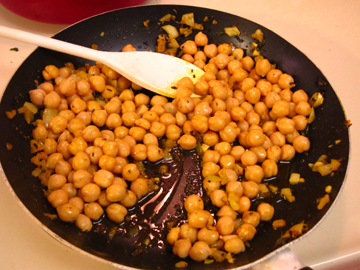
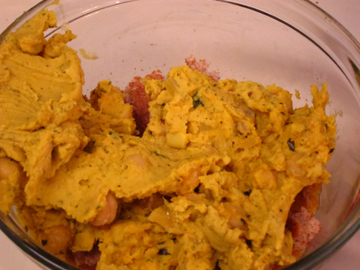
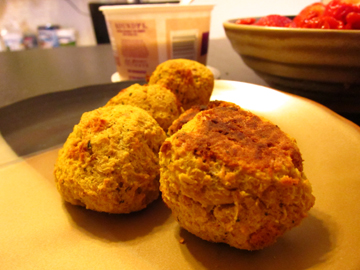
I next assembled the kale salad with avocado, almonds and nori. I found the instructions for toasting nori difficult to follow – my apartment has an electric stove, not a gas one, and I find the flavor of nori fine without carbonization. I otherwise followed the directions, and found the seasoning blended the flavors really well, giving me a salad that lasted two days while retaining freshness – as long as I added lemon juice.

After this, I baked black tea walnut cake. It was the biggest hit of all. The cake is rich, complex and great when you need something dense for breakfast. I was able to leave the uncovered cake out in my Midwestern kitchen for a week before any staleness set in. It was easy to make, of lower labor intensity, and long lasting.
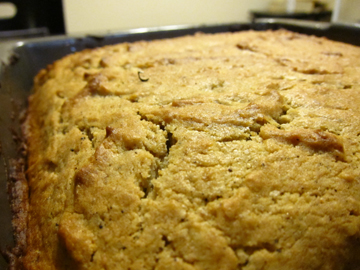
I could easily have spent a year going through the entire cookbook. I only found myself averse to a few recipes, generally those involving mushrooms and artichokes. For the sake of hitting some semblance of a deadline, however, I opted instead to finish off my experiments with two smoothie recipes.
The green smoothie came out chunky – my single serve blender protested such abuse – but tasted okay. As a quick way to absorb vegetables, it did improve on flavor over the spirulina drinks lining the shelves at my local food coop. This also proved yet another way to make myself eat kale – were it not for the green color of the drink, I would have had no idea I was imbibing something healthy.
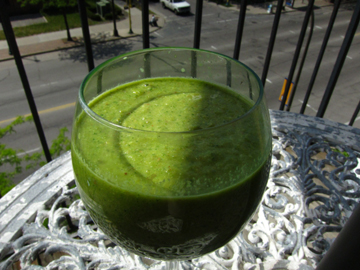
The last recipe attempted was the blueberry chocolate decadence smoothie – a simple smoothie recipe of blueberries, milk, and cocoa powder with a few spices and some maple syrup added. I left out the ice that the recipe called for, and while it tasted OK, I think at any revisit to the recipe I will substitute yogurt for milk.
Lucid Food is no beginner’s cookbook. It is a book designed for cooks prepared to commit to their food. Certainly, it can work for those slightly more casual about health but desirous of good food: my garbanzo beans came canned, my “maple syrup” was a sugarless substitute and I skipped the foccaccia recipe because I could not locate barley malt syrup at my chain grocery store. Even with these compromises, Lucid Food has already improved my lifestyle: I am now regularly eating kale.
~review by Diana Rajchel
Author: Louisa Shafia
Ten Speed Press, 2009
pp. 194 $22.50

